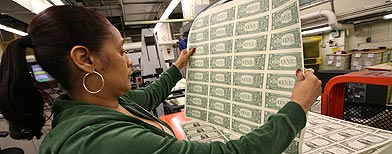Candid Scope
JF-Expert Member
- Nov 8, 2010
- 11,890
- 6,896

WASHINGTON The number of dollar bills rolling off the great government presses here and in Fort Worth fell to a modern low last year. Production of $5 bills also dropped to the lowest level in 30 years. And for the first time in that period, the Treasury Department did not print any $10 bills.The meaning seems clear.
The future is here. Cash is in decline.You cant use it for online purchases, nor on many airplanes to buy snacks or duty-free goods. Last year, 36 percent of taxi fares in New York were paid with plastic. At Commerce, a restaurant in the West Village in Manhattan, the bar menus read, Credit cards only. No cash please. Thank you.
There is no definitive data on all of this. Cash transactions are notoriously hard to track, in part because people use cash when they do not want to be tracked. But a simple ratio is illuminating. In 1970, at the dawn of plastic payment, the value of United States currency in domestic circulation equaled about 5 percent of the nations economic activity. Last year, the value of currency in domestic circulation equaled about 2.5 percent of economic activity.
New York Times